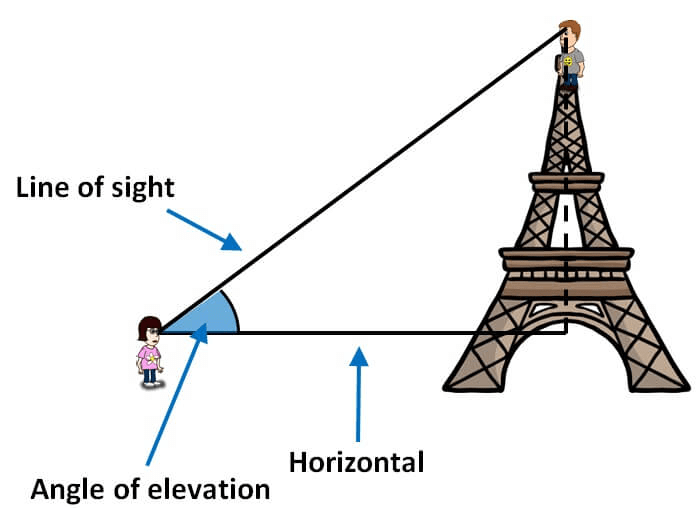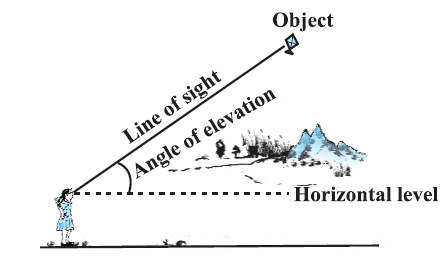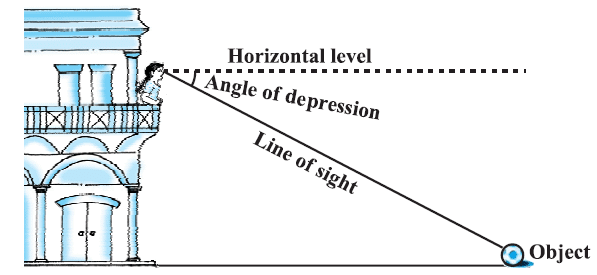Class 10 Exam > Class 10 Notes > Mathematics (Maths) Class 10 > Facts that Matter- Some Applications of Trigonometry
Facts that Matter- Some Applications of Trigonometry | Mathematics (Maths) Class 10 PDF Download
Heights and Distance
Line of Sight
The line of sight is the straight line drawn from a person's eye to the point of the object they are observing.

Angle of Elevation
The angle of elevation is the angle created between the line of sight and the horizontal when looking at an object that is above eye level. In the figure, ∠AOB is the angle of elevation.

Angle of Depression
The angle of depression is the angle formed between the line of sight and the horizontal when looking at an object that is below eye level. In the figure, ∠AOC is the angle of depression.

Note:
In case of an angle of elevation the observer has to raise his head to look at the object whereas in case of an angle of depression he lowers his head to look at the point being viewed.
The document Facts that Matter- Some Applications of Trigonometry | Mathematics (Maths) Class 10 is a part of the Class 10 Course Mathematics (Maths) Class 10.
All you need of Class 10 at this link: Class 10
|
127 videos|685 docs|84 tests
|
FAQs on Facts that Matter- Some Applications of Trigonometry - Mathematics (Maths) Class 10
| 1. What is the importance of trigonometry in calculating heights and distances? |  |
Ans.Trigonometry is essential for calculating heights and distances because it allows us to create relationships between angles and distances in various fields such as architecture, engineering, and navigation. By using trigonometric ratios like sine, cosine, and tangent, we can determine the height of an object or the distance to a point without direct measurement.
| 2. How can trigonometry be applied in real-life scenarios, such as surveying? |  |
Ans.Trigonometry is widely used in surveying to measure land, map out boundaries, and assess elevations. Surveyors use angles and distances to calculate the height of structures, the slope of terrain, and to create accurate maps. Instruments like theodolites rely on trigonometric principles to determine precise measurements.
| 3. What are some common trigonometric ratios used for height and distance calculations? |  |
Ans.The most common trigonometric ratios used for height and distance calculations include sine (sin), cosine (cos), and tangent (tan). For instance, if you know the angle of elevation and the distance from the base of a building, you can use the tangent function to find the height of the building.
| 4. Can you explain how to find the height of a tree using trigonometry? |  |
Ans.To find the height of a tree using trigonometry, you can stand a certain distance away from the tree and measure the angle of elevation to the top of the tree. Using the tangent function, you can apply the formula: height = distance × tan(angle). This will give you the height of the tree based on the measured angle and your distance from it.
| 5. What tools can be used to apply trigonometry for measuring heights and distances? |  |
Ans.Tools such as clinometers, theodolites, and rangefinders are commonly used to apply trigonometry for measuring heights and distances. A clinometer can help measure angles of elevation or depression, while a theodolite is used for precise angle measurements. Rangefinders utilize trigonometric calculations to determine distances based on the measured angles.
Related Searches






















